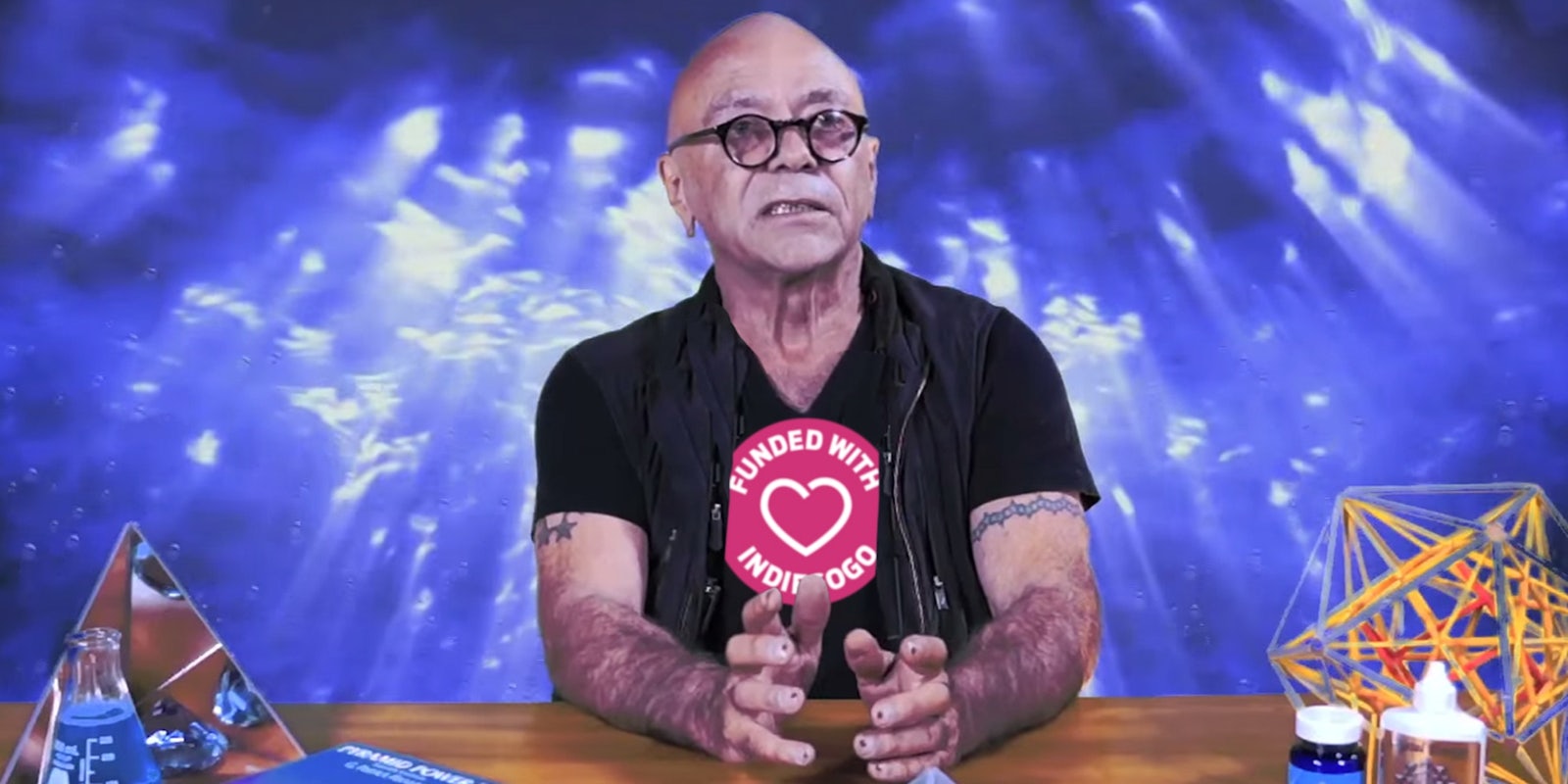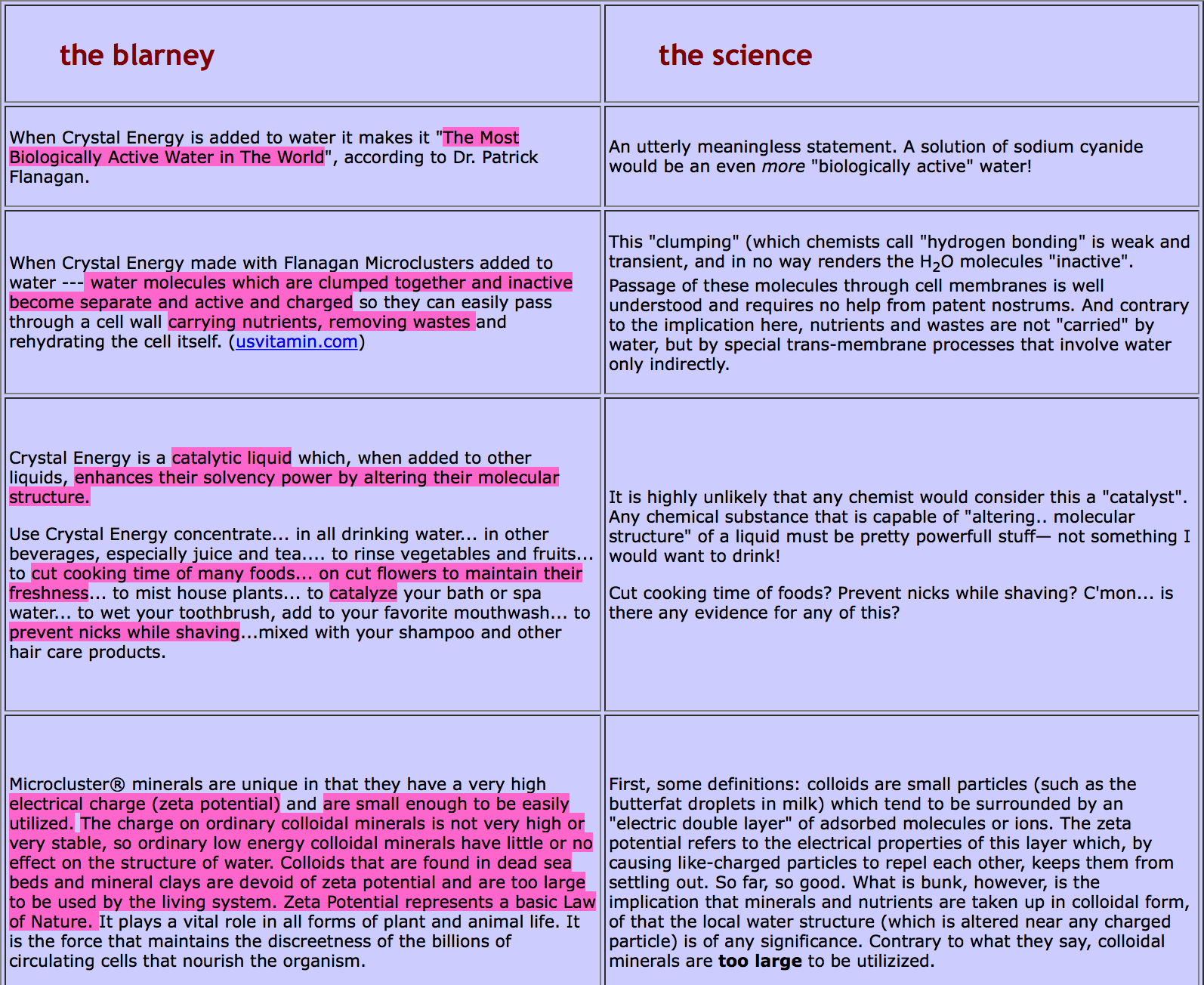“Either I’m the incarnation of Tesla, or I have the ability to tune into the cosmos and receive Tesla-like information,” I hear Dr. Patrick Flanagan say over the phone. His creation, the NEO Neurophone, has raised more than $160,000 on Indiegogo in the last 10 days. This, combined with reports that he is the visionary Serbian-American inventor Nikola Tesla reborn, meant the call seemed like a no-brainer.
After an hour of trying to get the doctor on the line—communication is always difficult when “Mercury is in retrograde,” his colleague Ken Sheetz explains—Flanagan is finally available to speak about his “profound” new invention, a “wearable techno-meditation device.” But as he chatters on about dolphins and the supposed dangers of Wi-Fi, it becomes clear that Mercury isn’t the only character acting strangely in this tale.
• • •
The crowdfunding revolution has transformed how thousands of businesses and individuals can raise capital for projects, allowing them to sidestep traditional financial gatekeepers and appeal directly to their potential user base. If people like what they see, they can choose to back a project for however much they like—and the funding model has seen dozens of break-out successes, including virtual reality headset Oculus Rift ($2,437,429 raised), Zach Braff film Wish I Was Here ($3,105,473) and novel icebox Coolest ($13,285,226).
But alongside each innovative project is a huckster flogging dodgy goods—and Dr. Flanagan appears to fall squarely into this latter category. To be sure, the NEO Neurophone has been a runaway success: With an initial $100,000 goal, it’s quickly blown past this figure, with as much as $250,000 incoming, when you factor in pay-it-later pledges.
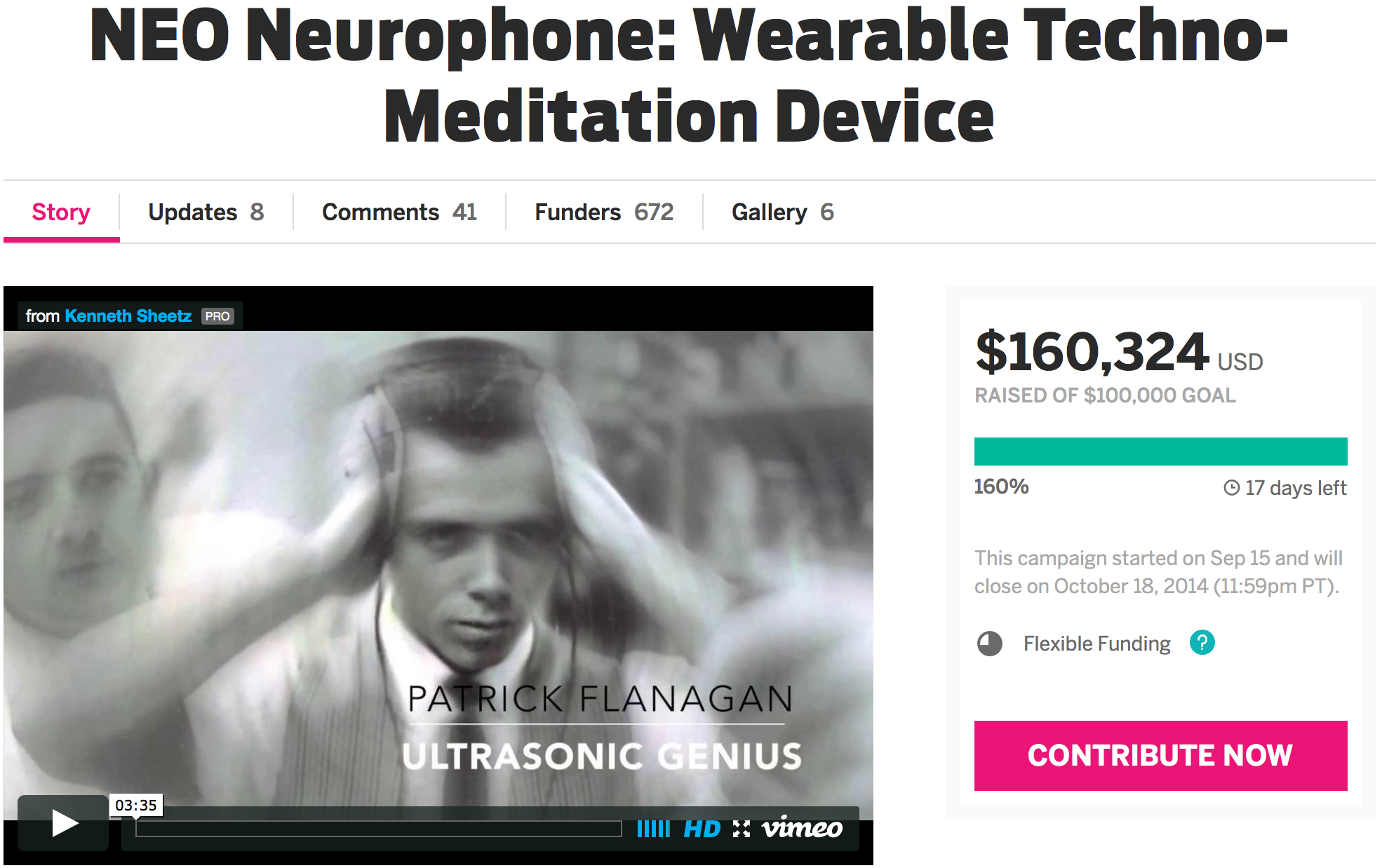
The doctor himself admitted to me, however, that not a lick of data shows the device works whatsoever.
Pseudoscientific quackery is an eternal problem, from snake oil salesmen to magic vitamins. What’s more worrying is the money men propping up the quacks. Driven by profits, crowdfunding platform Indiegogo is actively helping promote bogus technology—and the NEO Neurophone is just the latest in an exhausting line of potentially fishy product makers who use the crowdfunding site to fleece gullible consumers.
• • •
But we’re getting ahead of ourselves: Just who is Dr. Patrick Flanagan?
Born in 1944 and currently just a week shy of his 70th birthday, Flanagan claims to have been somewhat of a child prodigy. At just 8 years old, he says, he built his first Tesla coil, and at age 11, he claims to have invented a nuclear missile detector that was subsequently sold to the U.S. military—a piece of hardware that, Flanagan claims, remains in U.S. Air Force use “as far as we know.” When he was 17, Life apparently profiled him as part of a feature on the so-called “Take-Over Generation.” The magazine described him as a “mature and inquisitive scientist.”
Flanagan’s website claims bouts of employment as a consultant to the “NSA, CIA, NASA, Tufts University, the Office of Naval Research, and the Aberdeen Proving Grounds for the Department of Unconventional Weapons and Warfare.” His work on “human-to-dolphin communication” will remain classified for another 20 years, his colleague Ken Sheetz tells me.
It was back in 1958, however, at just 13 years old, that Flanagan invented the “Neurophone”—the device that has proved such a surprise hit on Indiegogo.
• • •
Indiegogo is known to have a much more relaxed approach to what it allows on its platform compared to its main rival, Kickstarter. The two “have taken a very different strategic approach,” Crowdfund Insider writes. “They both want to facilitate funding and democratize access to capital, [but] Indiegogo is more agnostic about what campaigns may launch on their site. … Kickstarter curates much more aggressively.”
Another difference between Kickstarter and Indiegogo is that only Indiegogo allows flexible funding, allowing creators to keep the proceeds raised even if they don’t reach their required goal. Under flexible funding, project owners also get the funds immediately—meaning even if a campaign is suspended, there’s no guarantee backers will ever see their money again. All of the campaigns discussed in this article use the flexible funding model.
Even bearing these differences in philosophy in mind, that Indiegogo would not just stand by but actively help promote an unverified product seems surprising—but it’s not unexpected. There are dozens of recorded instances of the crowdfunding platform playing host to projects that either are highly unlikely to work, or are actively shown to be scientifically impossible.
Most recently, there’s the Ritot Projection Watch, whose campaign ended on Sept. 26 after raising $1.4 million. Promising to display the time on your hand with a miniature projector , it’s been heavily criticized throughout the fundraising period as “impossible” with modern technology, and almost certain not to deliver.

Promotional image via Indiegogo.
There’s also the TellSpec laser that promised to analyse your food’s nutritional composition; after raising $400,000 its creators admitted they couldn’t actually make the device. Then there was the Healbe health-tracker, which Indiegogo failed to suspend despite medical experts saying its research “lacked any credibility and did not make scientific sense.” If possible, the technology would transform treatment of diabetes; “Indiegogo is the last channel you’d go through,” one expert told Pando Daily. Nonetheless, it didn’t fall foul of the company’s checks, and went on to raise more than $1 million.
And let’s not forget to mention the campaign that sprung up in the aftermath of the disappearance of flight MH370, which promised to “help the families find the truth.” Indiegogo OK’d the project—it raised $100,516—and no, it hasn’t found MH370 yet.
On each of these projects, Indiegogo collected its standard commission—4 percent of the total raised for projects that reach their goals. And it stands to receive at least $6,400 from the $160,000 raised for Flanagan’s Neurophone. The pay-it-later cash, however, all goes straight to Flanagan.
So why is Indiegogo content to allow what PandoDaily writer James Robinson has dubbed “scampaigns” to abuse its platform Either Indiegogo “doesn’t want to stop fraud like this, content to bank its fee,” Robinson writes, “or it doesn’t understand quite how stomped on and worthless its corporate reputation has become.”
A senior figure in the crowdfunding industry expressed dismay at the Daily Dot’s findings. “Every time Indiegogo looks the other way at clearly sketchy projects, it erodes trust,” the person, who asked to remain anonymous, said. “It’s not good for them. It’s not good for users. And it’s not good for crowdfunding.”
• • •
So, what is the NEO Neurophone?
The product markets itself as a “profound time-tested techno-meditation device that uses ultrasonic waves to soothe and centre your mind.” By transmitting ultrasonic waves through your skull and activating “saccules” in your “ancient ear,” Flanagan says, it can help you meditate, aid creativity, and even boost IQ, as well as alleviate disorders like ADD and ADHD. The doctor cites his step-daughter, Gwendolyn Dearborn, as an example. She also appears in much of the device’s publicity material.
“I felt like a genius,” attests Dearborn in a video about the Neurophone. “I didn’t have to do anything except put the electrodes on my head and read.”
Flanagan says that when he invented the device in the 1950s he didn’t even know how it worked. It was only more recent research into the potential effects of ultrasound on the brain that made him realize what he had created.
“For the first 20 years after it was invented,” the Indiegogo campaign tells us, “Dr. Flanagan’s Neurophone was kept under government lock and key for intense study … before the doctor managed after great effort to free his Neurophone for the general public.”
Since Flanagan’s “freeing” of the neurophone, the device sold a few thousand models in its various iterations over the years—before a chance encounter with filmmaker Ken Sheetz sparked the Indiegogo campaign and propelled Flanagan into the spotlight.
NEO is not named for the fictional Matrix film character, though comparisons may be drawn by fans for its ability to wake up a world being dumbed to sleep. However this NEO is real and ready to smarten up a planet one Neurophone at a time.
The advertized potential of the Neurophone.
On Indiegogo, you can buy the new NEO Neurophone for as little as $399—or, if you don’t fancy waiting until June 2015 for it to ship, you can acquire an older model, the NF3, for $699 (also available on Amazon for $100 more).
Flanagan explains the product.
For big spenders, the Tesla pack offers 10 Neurophones for $3,333—there’s been one buyer so far, a clinic in Malaysia. Alternately, there’s a Pay Later option available, offering the option to put down a $99 deposit with the $300 remainder payable before the devices start to ship. Taking into account the funds promised with this reward tier, the total amount of money raised is more than $250,000. More than 500 of the devices have been sold overall.
So, is Dr. Flanagan going to usher the world into a “smarter tomorrow, one NEO Neurophone at a time?” Unfortunately, the answer is almost certainly no.
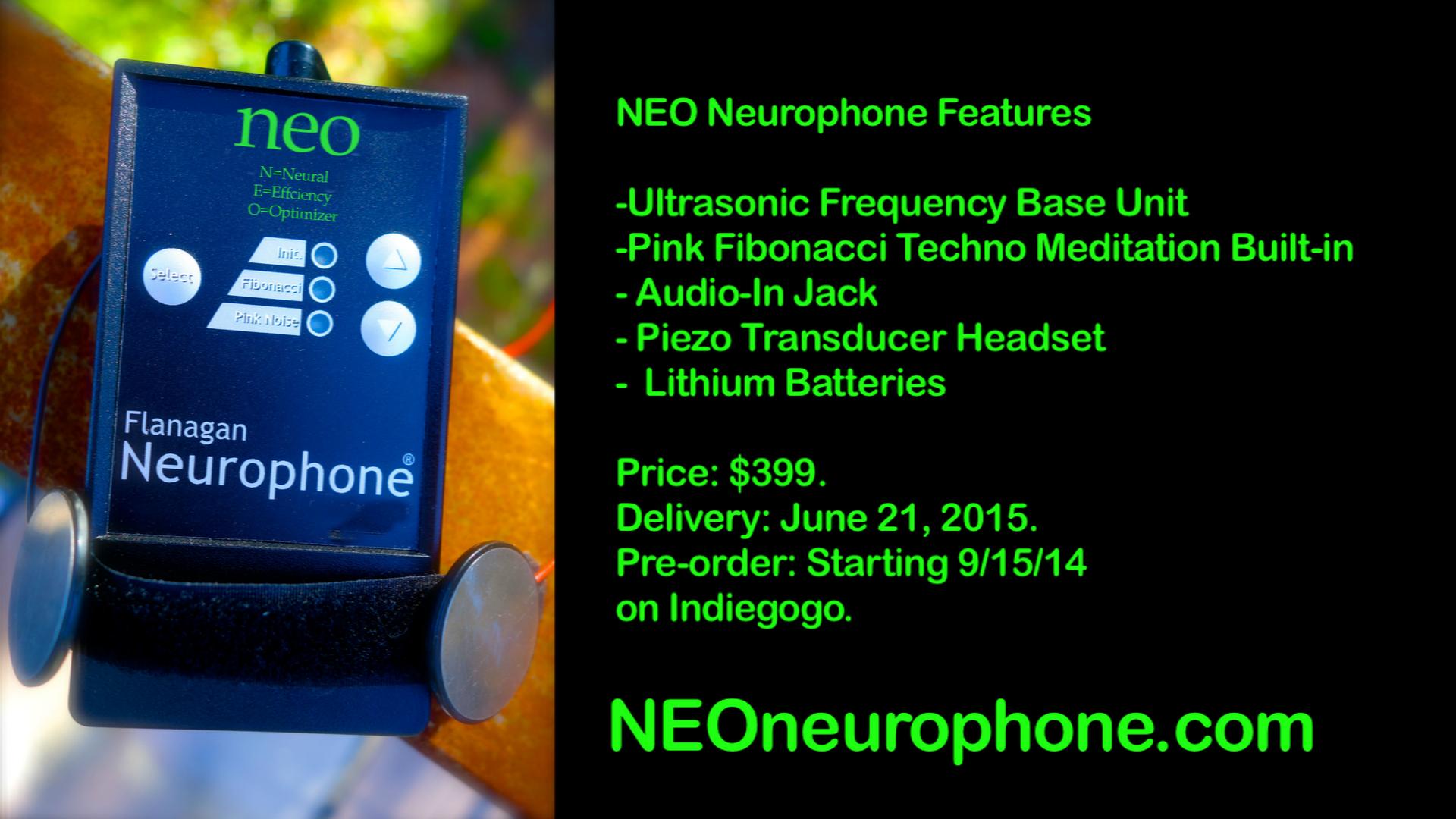
A promotional image of the Neurophone.
The simple fact of the matter is that there’s no hard evidence whatsoever to suggest that the Neurophone can do what it claims. There is research underway in various universities as to the potential effects of ultrasonic sound on the brain (carried out totally independently of Dr. Flanagan and his Neurophone)—but when quizzed, Flanagan admitted that beyond anecdotal tales, there is no data or studies available on the Neurophone itself to prove it works as described.
“I’ve been at this for 57 years,” Flanagan says, “and I’m just telling you all the things we’ve learned over 57 years, so no. I have no published studies on the Neurophone right now, no.”
Tellingly, an FAQ on the neurophone website says that it is a “purely experimental device,” and that “we can not make any medical claims.”
The Indiegogo campaign page also fails to reference the fact that all photos of the “device” are mock-ups, as the new NEO Neurophone has yet to be designed, engineered, or manufactured, and may bear no resemblance to the images shown.
• • •
But could it work? Let’s take a look at Dr. Patrick Flanagan’s track record of scientific discovery.
While described on the website of his company Phi Sciences as a “scientist and inventor and philanthropist,” his critics are less kind.
Flanagan is “one of those enduring stars in the constellation of pseudoscience and quackery,” retired chemistry professor Stephen Lower told the Daily Dot. Lower runs a website dedicated to debunking “junk science,” in which Flanagan’s “Crystal Energy” and “Microhydrin” products feature heavily. “There is no credible scientific support” for Flanagan’s claims about the anti-oxidising products he sells, Lower says.
Part of Lower’s debunk of Flanagan’s claims about “Crystal Energy.”
“All I can say about the Neurophone is that I am not aware of any reports of its clinical efficacy in the reputable scientific literature,” Lower says, adding that it’s “remarkable” that such a product was invented by someone at age 13.
Lower also tells the Daily Dot that Flanagan’s doctorate is issued by the Open International University for Complimentary Medicines, Colombo, Sri Lanka—an institute described as the “grandfather of diploma mills,” and whose degrees are not even valid in Sri Lanka itself.
An hour-long interview with Flanagan discussing Tesla, reincarnation, and extraterrestrials.
Of course, there’s also the fact that Flanagan believes he is the literal reincarnation of the legendary scientist Nikola Tesla. “When I was 8 years old, I told my mother—my name wasn’t Patrick, my name was Nikola Tesla,” explains Flanagan. “She said ‘who’s that?’ And I proceeded to try and tell her.”
When I was born, I remember laying in my crib, looking, at my feet, wiggling my toes and going … ‘Oh my god, I’ve got to grow this body up before I can get back to work again, and I hate growing up baby bodies.’ So what happened is, I got started early—by the time I was 8 I was building Tesla coils.
“Most of the world believes in reincarnation,” a colleague of Flanagan tells me by email, “but to some, it’s strange. Patrick’s life story is epic proof, at least, of the possibility of reincarnation. How else can you explain child prodigies?”
Flanagan bases his “new approaches to human healing” on “the great traditions of India and Egypt,” and has been described as the “archetype of the wizard” by controversial alternative medicine advocate Deepak Chopra—who’s work has been labelled by critics as “mumbo-jumbo” and the “purest nonsense.”
So, how did the Neurophone get off the ground and onto Indiegogo? That’s where Ken Sheetz comes in.
A Californian filmmaker, Sheetz is no stranger to crowdfunding. He first met Flanagan through a previous Indiegogo project of his own—raising money to travel to Antarctica in 2012 to “[halt] the pole shift long predicted by the Mayans, diverting all that energy to instead shift the polarity of human collective consciousness from negative to positive.” It raised $5,000 overall. 
A good question.
With the help of Sheetz and his company, BuzzBroz, Flanagan launched his campaign, and has seen remarkable success despite eschewing all conventional press outreach—”we are letting PR happen organically,” Sheetz says. As of press time, the only other publications the Daily Dot has found reporting on the NEO Neurophone is the German arm of Gizmodo, and trade publication Crowdfund Insider. Instead, the campaign has relied almost exclusively on word-of-mouth, notably the “Volunteers for a Smarter Tomorrow!” Facebook group.
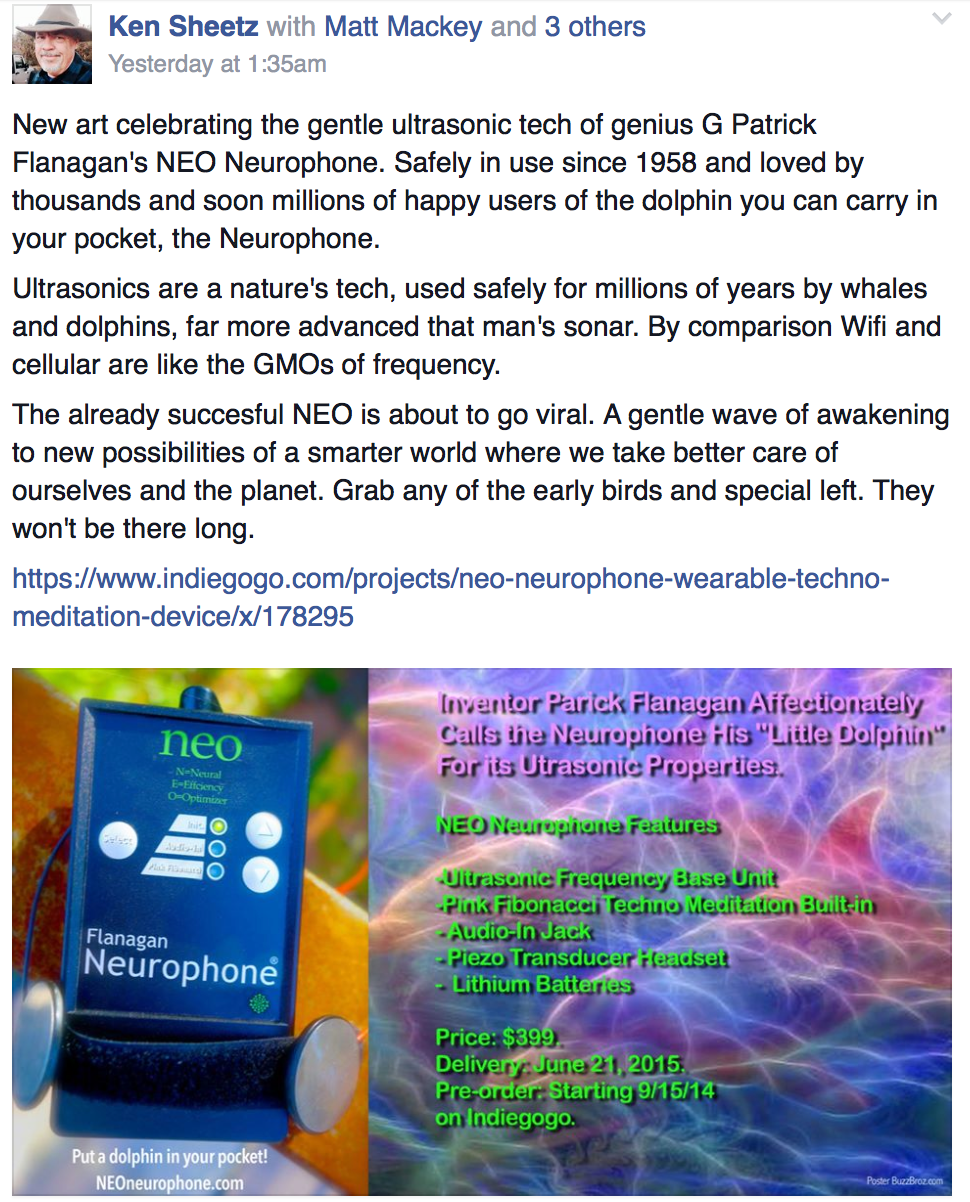
Another previous Indiegogo campaign of Sheetz’s is from Nick Edwards, an old “pyramid pal” of Flanagan’s. A firm believer in the “power of pyramids,” Edwards hoped to build a “more affordable Arkatron for commanding archangels to help heal the world.” Alas, he raised just $125 of his $22,000 goal.
With such a history, how did Indiegogo miss the NEO Neurophone? Sheetz confirmed to the Daily Dot that, rather than raising alarm bells, his previously projects actually enamoured Indiegogo toward him—the company prefers to work with people who have run at least five campaigns.
This isn’t just a case of oversight—Indiegogo is indeed actively working with Sheetz and Flanagan. The company has taken a “personal interest” in the project, Sheetz told the Daily Dot, and that they’re “really excited”—to the extent that Sheetz has been given “direct coaching from Indiegogo,” and the NEO Neurophone has been chosen to be featured on the front page of the website several times.
• • •
Crowdfunding will always attract the oddballs and the unconventional. We’ve seen how a subset of the American New Age mystic community frequently relies on Indiegogo to fund their more ambitious schemes. Sheetz told the Daily Dot he liked how it lets you “go straight to the people,” without relying on intermediaries.
Barnet Bain is another proponent of the platform—a Hollywood producer who’s previously worked with Robin Williams, he used Indiegogo to try to crowdfund a new film, an adaptation of New Age children’s book Milton’s Secret. Bain, a personal friend of Sheetz who encouraged him “when he first began having visions not to hide them, but to let them be a beacon,” eventually raised $300,000 of a $1,000,000 goal—and a year later continues to raise further funds on the film’s website.
Milton’s Secret may yet see the light of day and is in no way dishonest about its intentions. What differentiates Flanagan’s NEO Neurophone, Edwards’s “Arkatron,” and Sheetz’s trip to Antarctica to save the world is that the justification behind them is either highly dubious or just outright impossible.
Indiegogo has a much-touted “fraud protection algorithm,” and its terms of use stipulate that “if you know that your Campaign is claiming to do the impossible or it’s just plain phony, don’t post it.” But what if, like Flanagan et al, the creators honestly believe their own pseudoscientific babble? It seems Indiegogo is content to let such alchemists run amok, potentially duping gullible customers into funding nonsense, as the crowdfunding site quietly pockets their share of the profits.
Update 9:12am ET, Oct. 3: When approached for comment about the success of the NEO Neurophone, an Indiegogo spokesperson told the Daily Dot, “this is just one example of Indiegogo connecting campaign owners with the audience that is passionate about their project.”
Editor’s note: This story has been updated for clarity. Additional reporting by Jason Reed.
Photo via BuzzBroz / YouTube | Remix by Jason Reed
